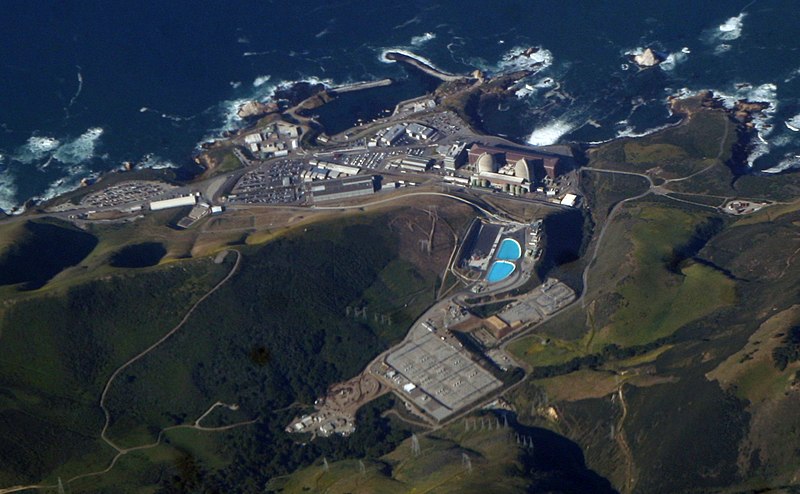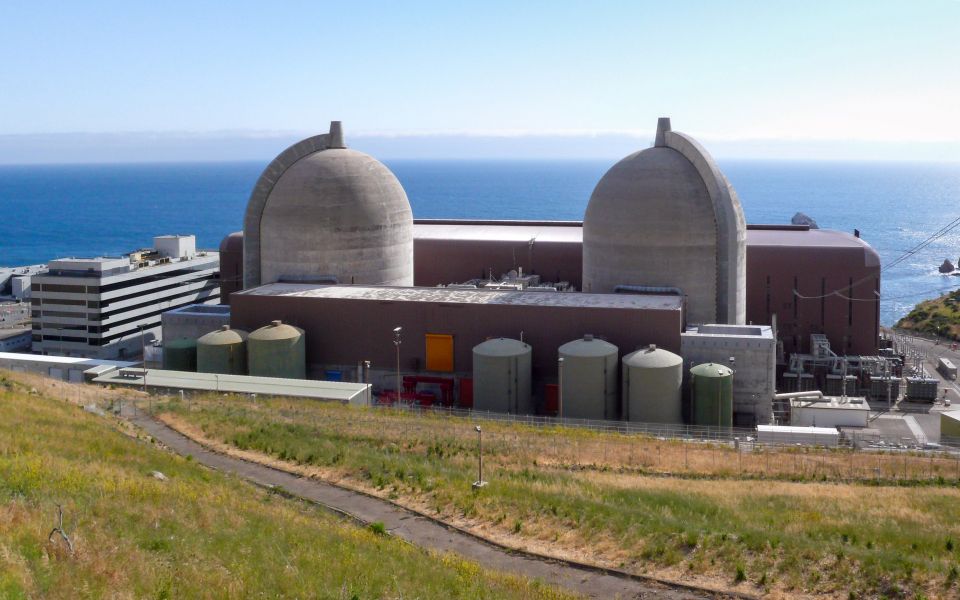A view of Diablo Canyon nuclear power plant from the water. (Photo: California Coastal Commission)
The owners of the Diablo Canyon nuclear power plant plan to dredge a massive buildup of shoaled sediment from its seawater intake cove.
Pacific Gas and Electric spokesperson Suzanne Hosn said, “The dredging project in the Diablo Canyon marina will remove approximately 70,000 cubic yards of sediment to prevent circumstances that could impact the power plant’s cooling system. Dredging will take place for the first time since operations began because of a rapid increase in sediment.”
The project was originally planned for last fall but was delayed due to inclement weather. The delay allowed PG&E project managers to refine the project and bring down costs, which will benefit customers, according to Hosn. During this time, the company was able to finalize its permit applications.
About the site: Diablo Canyon is California’s only remaining nuclear plant and is the largest energy producer, generating 8 percent of the state’s electricity.
The plant’s remaining two reactors were scheduled for shutdown in 2024 and 2030, respectively, but received five-year extensions to continue operating. Meanwhile, Diablo Canyon has also applied to the Nuclear Regulatory Commission for a 20-year license extension.
As part of its operations, the plant cycles about 2.5 billion gallons of seawater daily. It runs through the pipes of the nuclear plant to absorb heat and provide cooling. The water is then discharged back into the ocean.
Digging in: The dredging project is complex, requiring crews to excavate 70,000 cubic yards of shoaled sediment from the 10-acre cove and dump it roughly 1,300 to 2,500 feet offshore at the Morro Bay sandspit. The increase in sediment at the site is due to harsh winter storms and landslides on the Big Sur coast.
Currently, divers perform maintenance four to six times each year on the metal rack that protects the 240-foot-long and 104-foot-wide opening of the intake system. But hosing off the bars isn’t a substitute for dredging, PG&E told the California Coastal Commission.
“This is a relatively small, one-time activity,” Hosn said. “We don’t expect to have to have to dredge again during current or extended operations.”









